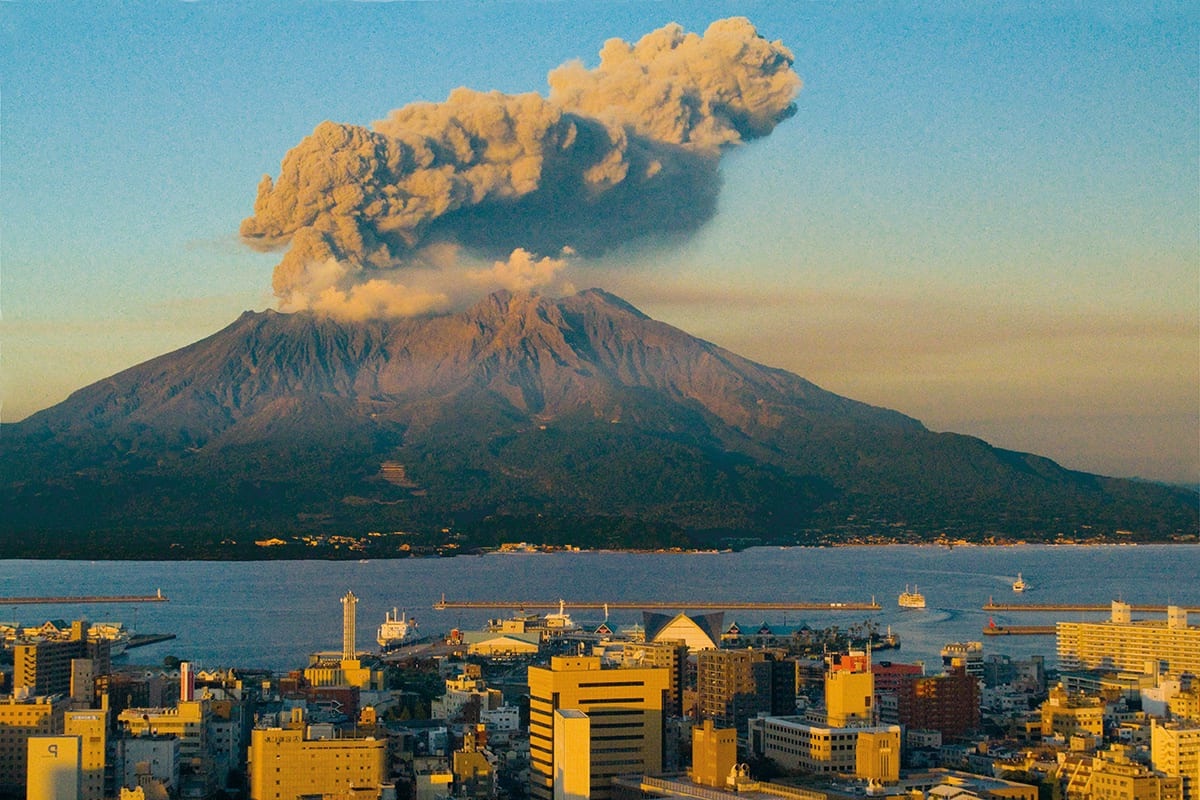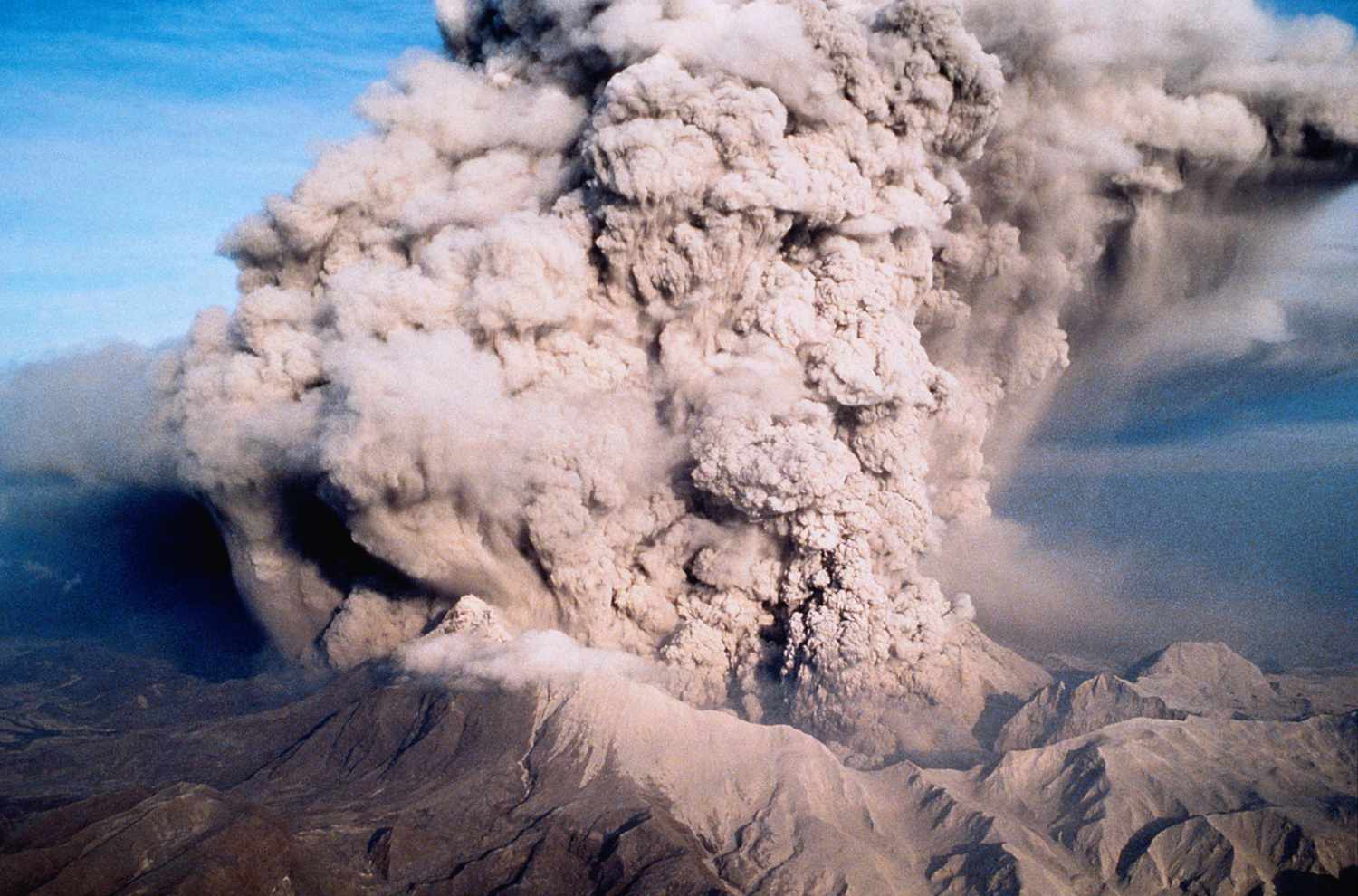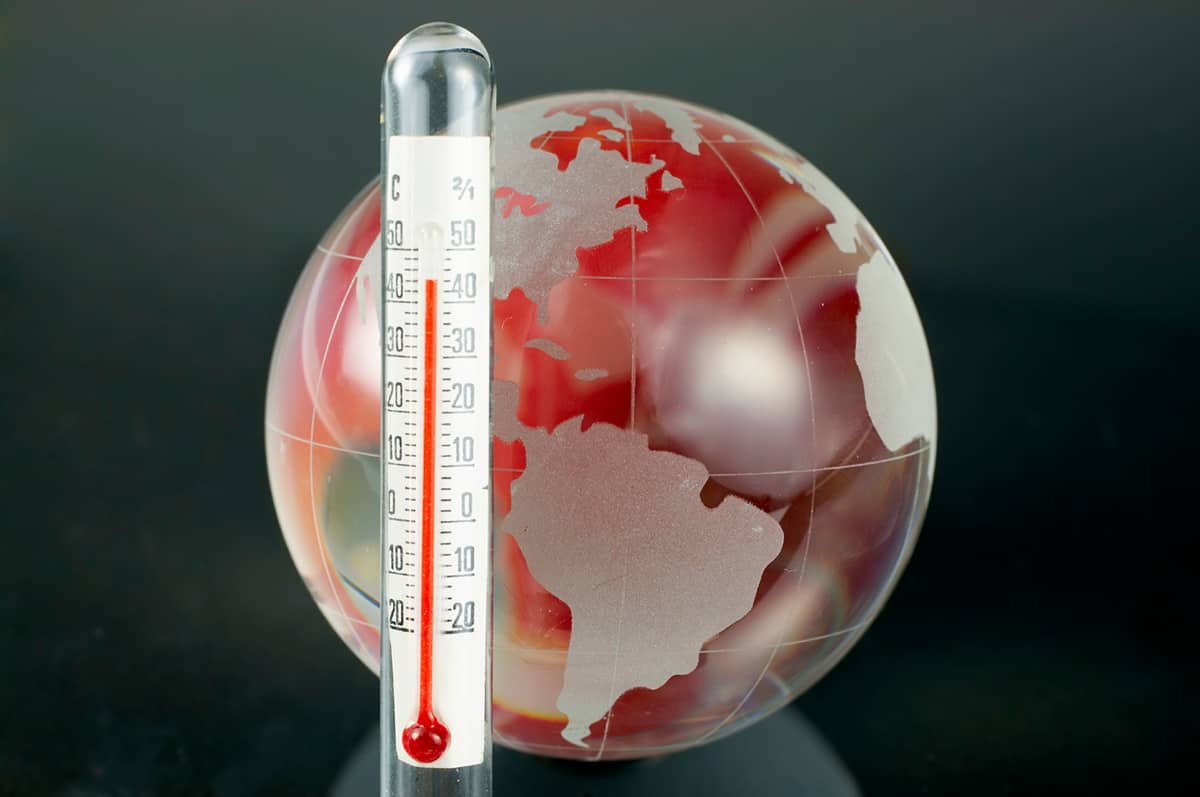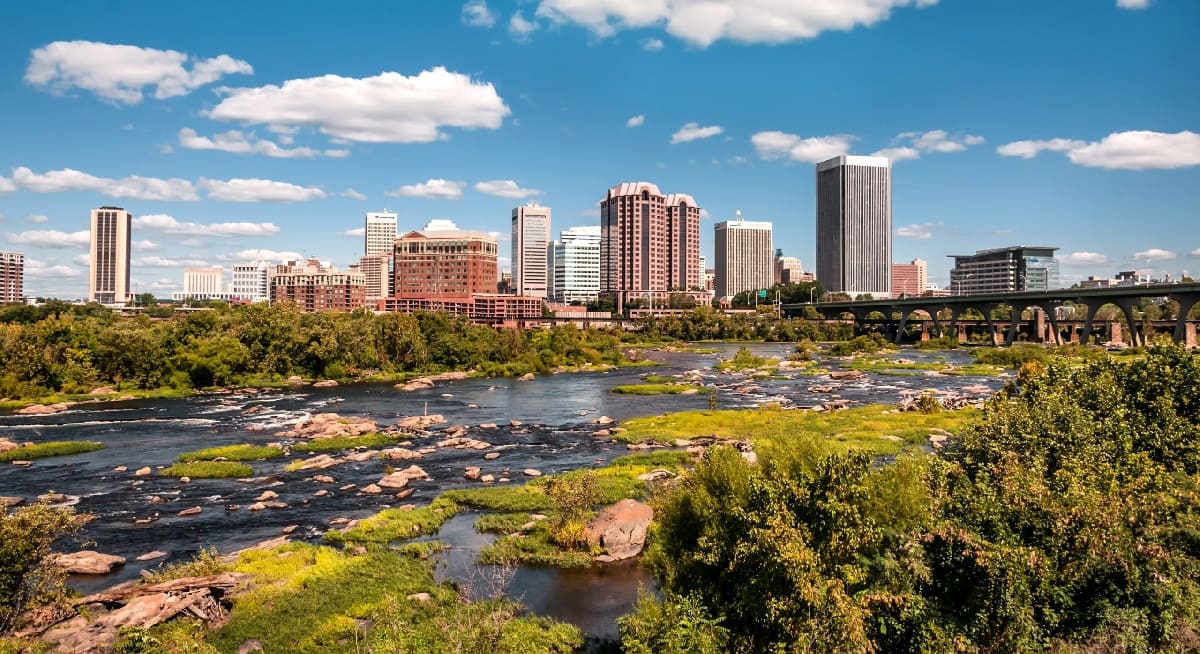Home>Weather and Climate>Substances That Can Reduce Air Temperatures Following A Volcanic Eruption


Weather and Climate
Substances That Can Reduce Air Temperatures Following A Volcanic Eruption
Published: March 2, 2024
Learn about the impact of volcanic eruptions on weather and climate, and the substances that can lower air temperatures post-eruption. Understand the role of these substances in shaping our environment.
(Many of the links in this article redirect to a specific reviewed product. Your purchase of these products through affiliate links helps to generate commission for Temperatures.com, at no extra cost. Learn more)
Table of Contents
Introduction
When a volcanic eruption occurs, it unleashes a powerful display of natural forces, shaping landscapes and impacting the environment in profound ways. Beyond the immediate devastation caused by lava flows and ash clouds, volcanic eruptions also have far-reaching effects on the Earth's climate. The release of various substances during an eruption can lead to significant changes in atmospheric conditions, including the reduction of air temperatures. Understanding the mechanisms behind this cooling effect is crucial for comprehending the complex interactions between volcanic activity and the climate.
Volcanic eruptions have been known to alter global weather patterns, with some of the most notable events in history leaving a lasting imprint on the planet's climate. The eruption of Mount Tambora in 1815, for instance, led to the infamous "Year Without a Summer" in 1816, causing widespread crop failures and food shortages across the Northern Hemisphere. Similarly, the 1991 eruption of Mount Pinatubo in the Philippines injected a colossal amount of sulfur dioxide into the stratosphere, resulting in a discernible cooling effect on a global scale.
The intricate relationship between volcanic eruptions and climate dynamics has piqued the interest of scientists and researchers, prompting extensive studies to unravel the underlying mechanisms. By delving into the role of specific substances released during volcanic eruptions, such as sulfur dioxide, ash particles, volcanic gases, and aerosols, we can gain valuable insights into how these elements contribute to the reduction of air temperatures in the aftermath of an eruption.
As we embark on this exploration of the substances that can mitigate air temperatures following a volcanic eruption, we will uncover the intricate processes that come into play when the Earth's geophysical forces intersect with the delicate balance of the atmosphere. Through this journey, we will unravel the fascinating interplay between natural phenomena and the climate, shedding light on the awe-inspiring power of volcanic eruptions and their far-reaching implications for our planet.
Read more: What Is Air Temperature and Why It Matters
The Role of Sulfur Dioxide
Sulfur dioxide (SO2) is a key player in the complex interplay between volcanic eruptions and climate. When a volcano erupts, it releases copious amounts of sulfur dioxide into the atmosphere, where it undergoes a series of transformative processes that exert a notable influence on air temperatures. The impact of sulfur dioxide on the climate is primarily attributed to its interaction with water vapor and other atmospheric components, leading to the formation of sulfate aerosols.
Once sulfur dioxide is injected into the upper atmosphere, it undergoes oxidation and reacts with water vapor to produce sulfate aerosols. These tiny particles serve as a potent mechanism for cooling the Earth's surface by reflecting incoming solar radiation back into space. This process effectively diminishes the amount of solar energy reaching the Earth's surface, resulting in a cooling effect on a global scale.
The presence of sulfate aerosols in the atmosphere also contributes to the enhancement of cloud formation. By providing a surface for water vapor to condense upon, these aerosols facilitate the creation of more extensive cloud cover. This, in turn, further amplifies the reflective properties of the atmosphere, leading to additional cooling effects.
The impact of sulfur dioxide on air temperatures following a volcanic eruption can be profound and long-lasting. The eruption of Mount Pinatubo in 1991 stands as a compelling example of the significant cooling influence exerted by sulfur dioxide. The massive release of this compound during the eruption led to a measurable reduction in global temperatures, with the effects persisting for several years.
The intricate relationship between sulfur dioxide and climate dynamics underscores the pivotal role played by volcanic eruptions in shaping atmospheric conditions. By comprehending the mechanisms through which sulfur dioxide influences air temperatures, scientists can gain valuable insights into the broader implications of volcanic activity on the Earth's climate system.
In summary, sulfur dioxide serves as a crucial agent in the modulation of air temperatures following a volcanic eruption, exerting its influence through the formation of sulfate aerosols and the augmentation of cloud cover. The multifaceted impact of this compound underscores the intricate web of interactions between volcanic emissions and the delicate balance of the Earth's climate, offering a compelling glimpse into the awe-inspiring forces at play in our natural world.
The Impact of Ash Particles
Ash particles, a prominent component of volcanic emissions, wield a significant influence on air temperatures following an eruption. These minuscule fragments, comprised of pulverized rock, minerals, and volcanic glass, are propelled into the atmosphere during explosive volcanic events, where they initiate a cascade of effects that contribute to the cooling of the Earth's surface.
Upon being ejected into the atmosphere, ash particles scatter and absorb incoming solar radiation, effectively diminishing the amount of sunlight reaching the Earth's surface. This reduction in solar energy penetration leads to a cooling effect, as less heat is absorbed by the planet. Additionally, the presence of ash particles in the atmosphere contributes to the formation of a veil-like layer that impedes the transmission of solar radiation, further contributing to the reduction of air temperatures.
Furthermore, ash particles play a pivotal role in the formation of volcanic clouds, which can extend over vast areas and persist for extended periods. These clouds, laden with ash particles, possess reflective properties that enhance their ability to scatter incoming solar radiation, thereby amplifying the cooling effect on the Earth's surface. The widespread coverage of these volcanic clouds can lead to substantial reductions in air temperatures, impacting regional and global climate dynamics.
The impact of ash particles on air temperatures following a volcanic eruption is not confined solely to the immediate aftermath of the event. The lingering presence of these particles in the atmosphere can exert a sustained cooling influence, with the effects persisting for an extended duration. The eruption of Mount Pinatubo in 1991 serves as a compelling illustration of the enduring impact of ash particles on air temperatures, with the cooling effects being observed for several years following the eruption.
In summary, the influence of ash particles on air temperatures following a volcanic eruption is profound and multifaceted. Through their ability to scatter solar radiation, contribute to the formation of volcanic clouds, and exert sustained cooling effects, these minute fragments of volcanic emissions play a pivotal role in shaping climate dynamics in the aftermath of an eruption. The intricate interplay between ash particles and the Earth's atmosphere underscores the remarkable influence of volcanic activity on the delicate balance of the planet's climate.
The Cooling Effect of Volcanic Gases
Volcanic gases, comprising a diverse array of compounds such as water vapor, carbon dioxide, sulfur dioxide, and hydrogen sulfide, play a pivotal role in shaping the Earth's climate following a volcanic eruption. These gases are released in substantial quantities during volcanic events, exerting a notable influence on atmospheric conditions and air temperatures.
Among the various volcanic gases, sulfur dioxide (SO2) stands out as a key contributor to the cooling effect observed after an eruption. When sulfur dioxide is emitted into the atmosphere, it undergoes a series of chemical reactions, ultimately leading to the formation of sulfate aerosols. These minute particles serve as a potent mechanism for reflecting incoming solar radiation, effectively reducing the amount of solar energy reaching the Earth's surface. This process results in a discernible cooling effect on a global scale, contributing to alterations in regional and global climate patterns.
In addition to sulfur dioxide, volcanic gases such as water vapor and carbon dioxide also play significant roles in influencing air temperatures. Water vapor, released in substantial quantities during volcanic eruptions, contributes to the formation of clouds, which possess reflective properties that can scatter incoming solar radiation. This leads to a reduction in the amount of solar energy absorbed by the Earth's surface, thereby contributing to a cooling effect.
Furthermore, the release of carbon dioxide during volcanic eruptions can have complex and varied effects on air temperatures. While carbon dioxide is a greenhouse gas that can contribute to warming the Earth's surface by trapping heat, its impact following a volcanic eruption is influenced by a range of factors, including the scale of the eruption, the duration of gas release, and the interactions with other atmospheric components. In some instances, the release of carbon dioxide during volcanic events may lead to short-term cooling effects, particularly when accompanied by concurrent emissions of sulfur dioxide and ash particles.
The intricate interplay between volcanic gases and air temperatures underscores the multifaceted nature of the cooling effect following a volcanic eruption. By comprehending the diverse influences exerted by these gases, scientists can gain valuable insights into the complex interactions between volcanic activity and the Earth's climate system, shedding light on the remarkable forces at play in shaping our planet's atmospheric dynamics.
The Influence of Aerosols
Aerosols, comprising a diverse array of tiny particles suspended in the atmosphere, exert a profound influence on air temperatures following a volcanic eruption. These minute particles, which encompass a range of substances including sulfate aerosols, ash particles, and other volcanic emissions, play a pivotal role in shaping climate dynamics through their interactions with solar radiation and cloud formation.
Sulfate aerosols, formed through the oxidation of sulfur dioxide emitted during volcanic eruptions, are particularly significant in modulating air temperatures. These aerosols possess potent reflective properties, effectively scattering incoming solar radiation and reducing the amount of solar energy reaching the Earth's surface. This process leads to a discernible cooling effect, as the presence of sulfate aerosols diminishes the heat absorbed by the planet. Furthermore, sulfate aerosols contribute to the enhancement of cloud formation, providing surfaces for water vapor to condense upon and fostering the creation of extensive cloud cover. This amplifies the reflective properties of the atmosphere, further contributing to the reduction of air temperatures.
In addition to sulfate aerosols, ash particles released during volcanic eruptions also play a pivotal role in influencing air temperatures. These particles scatter and absorb incoming solar radiation, diminishing the penetration of sunlight to the Earth's surface and contributing to a cooling effect. Furthermore, the presence of ash particles in the atmosphere contributes to the formation of volcanic clouds, which possess reflective properties that further amplify the scattering of solar radiation, leading to additional cooling effects.
The influence of aerosols on air temperatures following a volcanic eruption extends beyond the immediate aftermath of the event. The lingering presence of these particles in the atmosphere can exert sustained cooling effects, impacting regional and global climate dynamics for an extended duration. The eruption of Mount Pinatubo in 1991 serves as a compelling illustration of the enduring impact of aerosols on air temperatures, with the cooling effects being observed for several years following the eruption.
The intricate interplay between aerosols and air temperatures underscores the remarkable influence of volcanic activity on the delicate balance of the Earth's climate. By comprehending the diverse influences exerted by these minute particles, scientists can gain valuable insights into the complex interactions between volcanic emissions and the planet's atmospheric dynamics, shedding light on the awe-inspiring forces at play in shaping our natural world.
Conclusion
In conclusion, the substances released during volcanic eruptions play a pivotal role in modulating air temperatures and shaping climate dynamics in the aftermath of these powerful geophysical events. Sulfur dioxide, a prominent emission from volcanic activity, exerts a significant cooling effect through the formation of sulfate aerosols and the augmentation of cloud cover. The impact of sulfur dioxide on air temperatures has been demonstrated in historical eruptions, such as the notable cooling observed following the eruption of Mount Pinatubo in 1991.
Ash particles, another essential component of volcanic emissions, contribute to the reduction of air temperatures by scattering solar radiation and fostering the formation of volcanic clouds. These minute fragments play a crucial role in shaping climate dynamics, with their influence extending beyond the immediate aftermath of an eruption, as evidenced by the enduring cooling effects observed following historical volcanic events.
Volcanic gases, including sulfur dioxide, water vapor, and carbon dioxide, also wield a notable influence on air temperatures. The formation of sulfate aerosols from sulfur dioxide, the contribution of water vapor to cloud formation, and the complex effects of carbon dioxide release collectively contribute to the multifaceted cooling observed following volcanic eruptions.
Aerosols, encompassing a diverse array of tiny particles suspended in the atmosphere, further amplify the cooling effect through their reflective properties and their role in enhancing cloud formation. The enduring impact of aerosols on air temperatures underscores the remarkable influence of volcanic activity on the delicate balance of the Earth's climate.
By unraveling the intricate mechanisms through which these substances interact with the atmosphere and solar radiation, scientists can gain valuable insights into the complex interplay between volcanic emissions and the planet's climate system. This deeper understanding not only enriches our knowledge of natural phenomena but also provides crucial insights into the broader implications of volcanic activity on global climate dynamics.
In essence, the substances released during volcanic eruptions, including sulfur dioxide, ash particles, volcanic gases, and aerosols, collectively contribute to the reduction of air temperatures, shaping regional and global climate patterns in the aftermath of these awe-inspiring natural events. The profound influence of these substances underscores the intricate web of interactions between volcanic activity and the delicate balance of the Earth's climate, offering a compelling glimpse into the awe-inspiring forces at play in our natural world.














